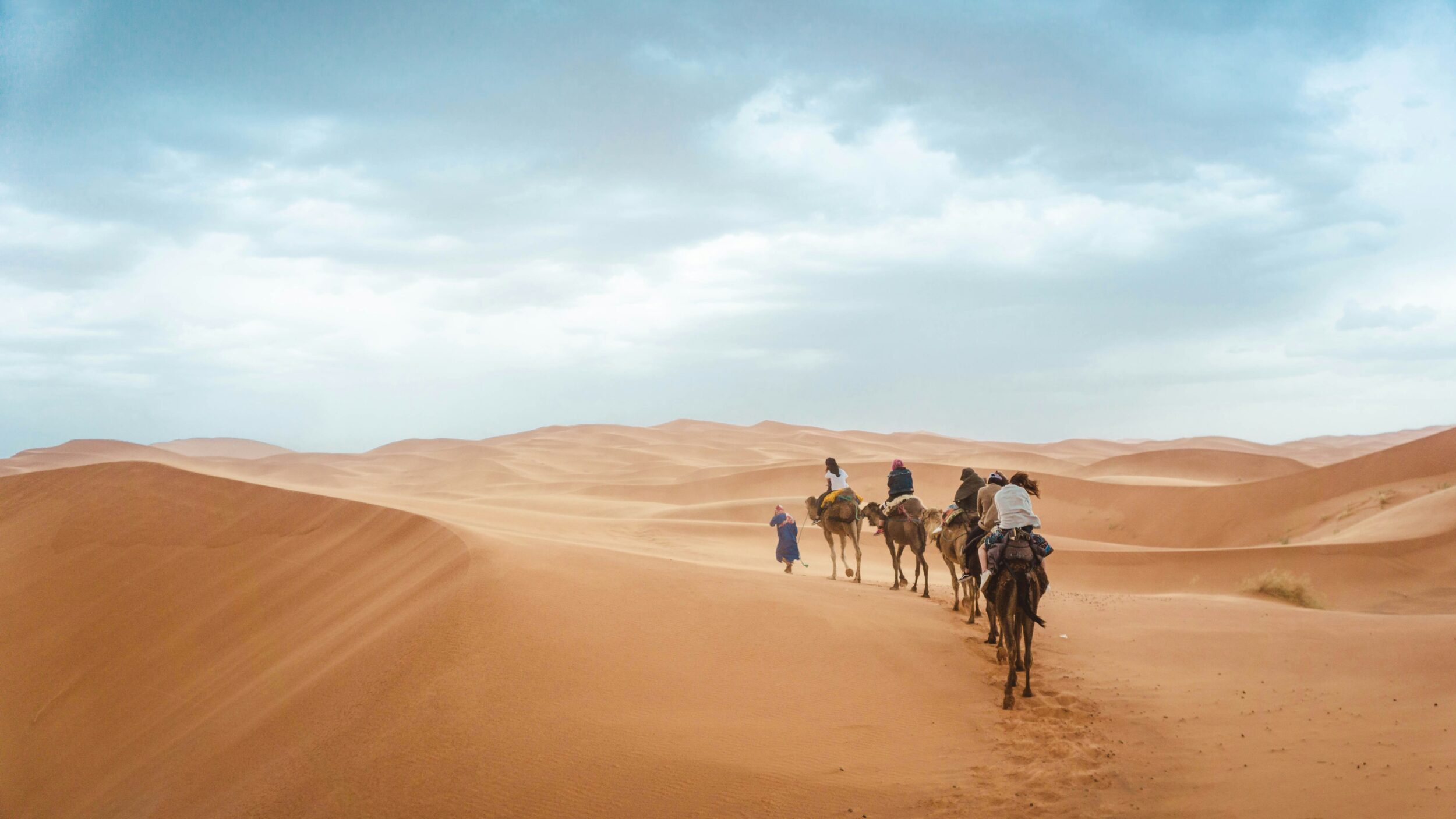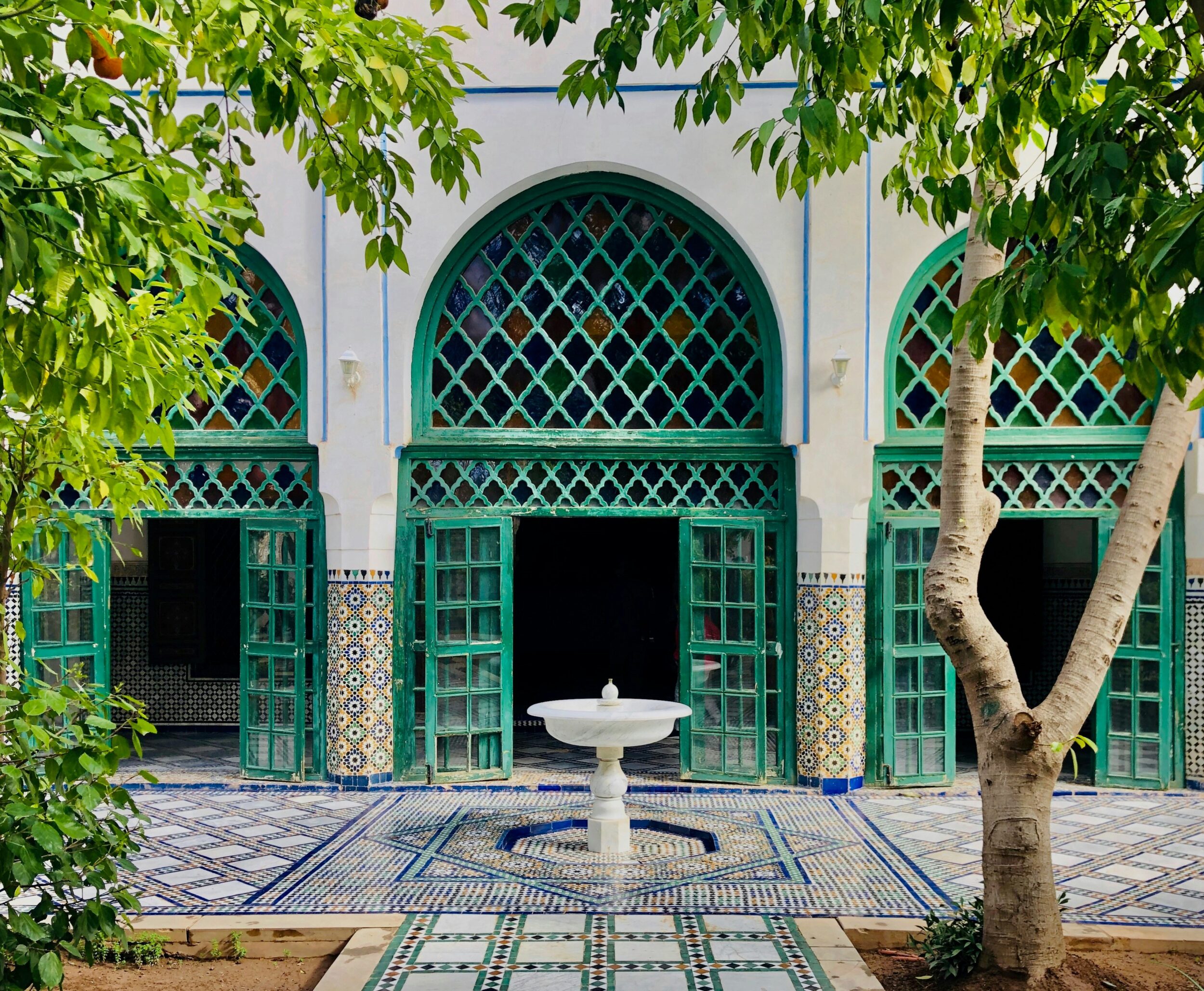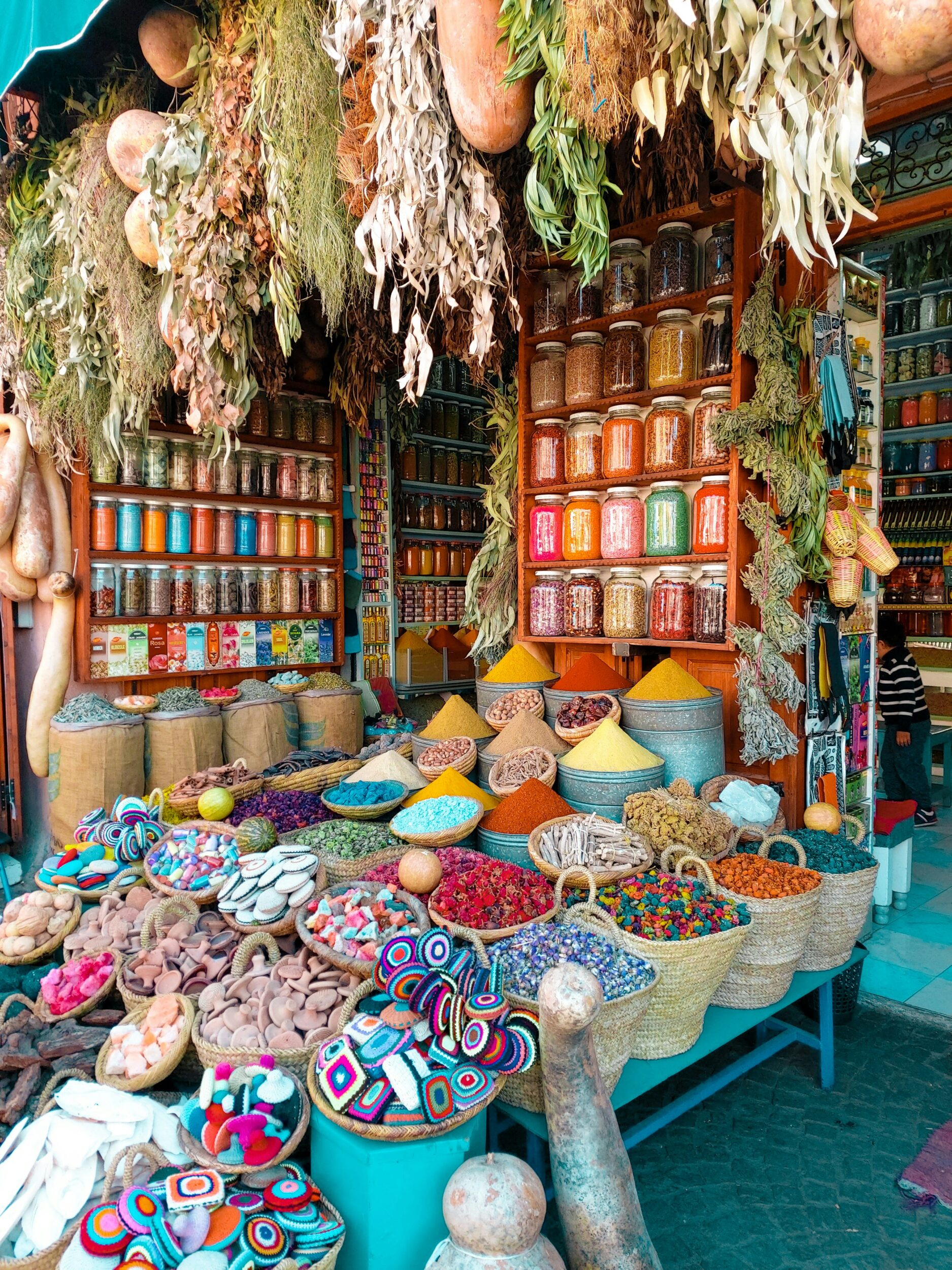Morocco – Destination Guide
Morocco, a land of contrasts and captivating beauty, invites travelers to explore its vibrant cities, rugged landscapes, and rich cultural heritage. From Tangier to Casablanca and Marrakech, every Moroccan city is a feast for the senses. The delicious and enticing smells of local food markets, the elaborate Moorish architecture, and the vibrant street life make Morocco a treat for any traveler. When most people think of Morocco, they imagine Humphrey Bogart and Ingrid Bergman in Casablanca, with Bogart proclaiming, “Of all the gin joints in all the towns in all the world, she walks into mine.” Any traveler will count themselves lucky upon walking into Morocco.
Moroccan culture has been influenced by a diverse array of civilizations. Arab dynasties, French and Spanish colonization, and Berber traditions have all left their mark, enriching Moroccan culture. The best place to witness this cultural tapestry is in the medinas. Each major Moroccan city has its own medina, or old town, where narrow cobblestone streets wind through bustling markets. In the medina, you can find bakers selling honey-drizzled pastries, rug salesmen touting their wares, and artisans crafting intricate pottery. These vibrant, maze-like quarters offer a glimpse into Morocco’s rich heritage and daily life.

Cities and Regions
🕌 Marrakech & Central Morocco
A lively mix of tradition and modernity, Marrakech is famed for its buzzing souks, grand palaces, and the iconic Jemaa el-Fnaa square. The nearby Atlas Mountains offer hiking trails, Berber villages, and snow-capped peaks.
-
Wander the winding alleys of the Marrakech medina
-
Visit Bahia Palace and the Saadian Tombs
-
Trek or take a day trip to the High Atlas Mountains
-
Relax in a traditional hammam spa
🏜️ Sahara Desert & Southern Oases
A vast expanse of golden dunes and palm-fringed oases, the Sahara offers epic sunsets, camel treks, and nomadic culture.
-
Ride camels through Erg Chebbi or Erg Chigaga dunes
-
Camp overnight in a luxury desert camp under the stars
-
Explore the film-set-like town of Ouarzazate
-
Visit ancient ksars like Ait Ben Haddou

🎨 Fez & Northern Morocco
Fez is Morocco’s spiritual and cultural heart – a maze of ancient alleys and hidden treasures. The north offers a mix of Mediterranean charm and colonial history.
-
Get lost in the UNESCO-listed Fez el-Bali medina
-
Discover traditional leather tanneries and mosaic workshops
-
Visit the blue-painted town of Chefchaouen
-
Explore Tangier’s coastal history and café culture
🌊 Atlantic Coast
Stretching from the boho beaches of Essaouira to the cosmopolitan sprawl of Casablanca, Morocco’s Atlantic coast is relaxed and breezy.
-
Surf or unwind in Essaouira’s laid-back coastal vibe
-
Wander Casablanca’s art deco streets and see the Hassan II Mosque
-
Sample fresh seafood at seaside towns like Asilah and El Jadida
-
Enjoy beach resorts and golf in Agadir

🍽️ Must-Try Moroccan Dishes
-
Tagine – Slow-cooked stew of meat or vegetables with spices
-
Couscous – Steamed semolina served with meat and vegetables
-
Harira – A hearty tomato and lentil soup often served during Ramadan
-
Pastilla – A savory-sweet pie filled with spiced pigeon or chicken and almonds
-
Mint tea – Morocco’s national drink, poured high and served sweet
📅 Best Time to Visit
-
Spring (March – May) and Autumn (September – November) offer the best weather for sightseeing and trekking
-
Summer (June – August) can be extremely hot, especially inland and in the desert
-
Winter (December – February) is mild on the coast but snowy in the mountains and cold in the desert at night
🧳 Essential Travel Tips
-
Dress modestly, especially in rural and conservative areas
-
Bartering is expected in markets – start low and negotiate with a smile
-
French is widely spoken; Arabic and Berber are the main languages
-
Carry cash – many small shops and restaurants don’t accept cards
-
Fridays are holy days – some attractions may close or have shorter hours

📍 Top Experiences
-
Sunset camel trek in the Sahara Desert
-
Discover the blue alleys of Chefchaouen
-
Get pampered in a traditional Moroccan hammam
-
Explore the Roman ruins of Volubilis
-
Shop the artisan souks of Fez and Marrakech
-
Hike to waterfalls in the Ourika Valley
-
Visit the grand Hassan II Mosque in Casablanca

🧾 Practical Info
-
Visa Requirements – Most travelers from the EU, UK, Australia, New Zealand, Canada, and the US can enter Morocco visa-free for up to 90 days. A passport valid for at least 6 months from the date of entry is required. Check country-specific requirements here: https://www.visaguide.world/africa/morocco-visa/
-
Currency – Moroccan Dirham (MAD). Credit cards are accepted in hotels and larger restaurants, but carry cash for markets and smaller shops.
-
Plugs & Voltage – Type C and E plugs; 220V supply. An adapter is needed for non-European devices.
- Safety Tips – Morocco is generally safe, especially in tourist areas. Be cautious of scams in medinas, avoid political gatherings, and dress conservatively. Solo female travelers may face occasional harassment – traveling in pairs is recommended.
-
SIM & eSIM – SIM cards are available from Maroc Telecom, Orange, and Inwi at airports and local shops. eSIMs from providers like Airalo or Holafly are ideal for hassle-free connectivity. Make sure your phone is unlocked.
✈️ Airports, Getting Around & Transport
-
Main International Airports
-
Casablanca Mohammed V International Airport (CMN) – Morocco’s largest and busiest airport, ideal for long-haul arrivals
-
Marrakech Menara Airport (RAK) – Convenient for southern Morocco and desert tours
-
Fez-Saïss Airport (FEZ) – Gateway to northern Morocco and the imperial city of Fez
-
Tangier Ibn Battuta Airport (TNG) – Best for coastal and Mediterranean regions
-
Agadir Al Massira Airport (AGA) – Good for beach resorts and surf towns
-
-
Getting Around
-
Trains – Comfortable and efficient for intercity routes like Casablanca–Rabat–Fez–Marrakech
-
CTM and Supratours buses – Reliable options for long-distance travel to remote regions
-
Grand taxis – Shared long-distance taxis that run between towns
-
Petit taxis – Metered urban taxis (check the meter is used or agree on a fare beforehand)
-
Car rentals – Available in major cities and airports; useful for mountain or desert routes
-
Domestic flights – Limited but useful for long-haul internal connections, especially from Casablanca
-
🌍 Why Visit Morocco?
Morocco is where Africa meets the Arab world and the Mediterranean flirts with the Sahara. Its landscapes are wildly diverse, its culture is deep and vibrant, and its history is written in ancient kasbahs and tile-covered mosques. Whether you’re shopping for spices in a centuries-old medina or stargazing in the desert, Morocco invites you to slow down, look deeper, and experience the magic woven into every corner.

